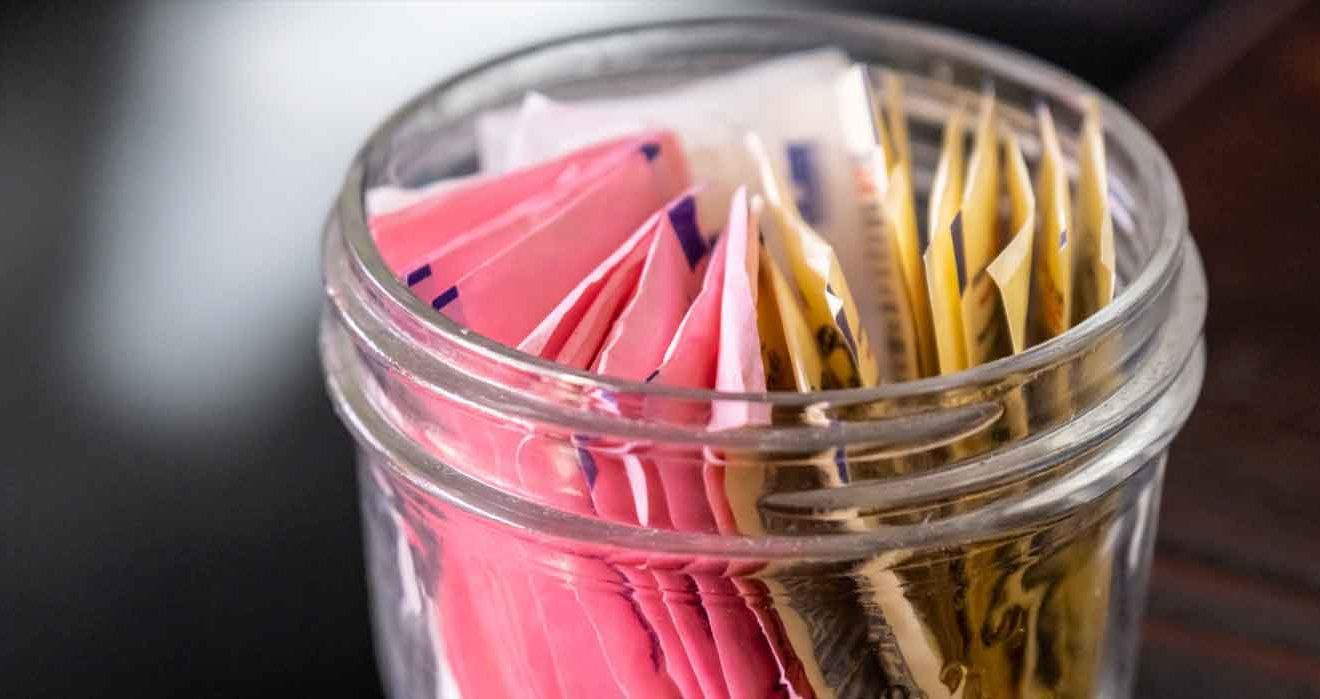What didn’t they say about the artificial sweeteners? which are fattening, carcinogenic, cause diabetes, and in general – horrible. Our dietitian came out to check if they are that bad or if we may have exaggerated a bit with the slander and intimidation
Artificial sweeteners are food additives with very low nutritional value that are used to sweeten instead of sugar.
Despite the bad reputation of sugar substitutes, health organizations around the world approve their use.
While for diabetics this is the right solution, for those without diabetes it is better to simply consume sugar in moderation, without exaggerating the sweetness.
There is almost no topic in the field of nutrition around which as many concerns, misconceptions and scary stories have been created as the field of artificial sweeteners.
If we search on Google or ask people on the street about sucrose, sucralose, and aspartame, the prevailing (and mistaken) impression is: “These sweeteners are no less than poison!” In the cases when I offer my patients foods with sugar substitutes, they all answer in amazement the same thing: “But it’s harmful to health!”
So let’s break some stigmas: according to evidence-based medicine, there is no evidence to support this claim, and many health organizations around the world have approved the use of various sweeteners for the entire population.
Are the sweeteners harmful or harmless to health? And if they are not harmful – how true is this with regular and continuous consumption? Is it even worth using artificial sweeteners instead of sugar, and is there any health benefit? I promise to give all the answers later, but before that – get to know some facts about sugar substitutes.

What are sugar substitutes anyway?
Sugar substitutes are food additives with very low nutritional value that are used to sweeten food instead of sugar. They are produced synthetically and are called “artificial sweeteners”.
Sweeteners are divided into 2 main groups: sugar substitutes without caloric value and sugar substitutes with low caloric value.
Sugar substitutes without caloric value
Artificial sweeteners with no caloric value do not contain available carbohydrates and therefore do not raise blood sugar levels. They are based on substances whose sweetness is tens to hundreds (!) times higher than that of natural sugar, therefore they only contain a minimal amount of active substance.
where are they located They are used both in the food industry and for home use. Some are suitable for baking and cooking (such as sucralose), and others are not suitable for this (eg saccharin).
Which sweeteners are included in this group? Saccharin (“Sucrose”, “Sweet and Light”), Aspartame (“Sweet Diet”), Acesulfame-K, Sucralose (“Sukhara-Diet”, “Sucharlite”), and Cyclamate.
The latest to officially join the group of sugar substitutes is a sweetener based on natural substances extracted from the stevia plant. The origin of this plant is in South America, and it contains the substances stevioside and rebaudioside.
These materials are resistant to heat and different levels of acidity, so stevia-based sweetener is also suitable for cooking and baking. In recent years, stevioside has been officially defined as an “artificial sweetener” in the United States and Europe. Although the sweetener is based on the extraction of the stevia plant – a substance that exists in nature – it is manufactured and processed like all other artificial sweeteners in a factory for mass consumption.
Some products combine several types of sweeteners: “like sugar” and “dip”, for example, contain saccharin and cyclamate; “Sucrose gold” contains aspartame and acesulfame-K.
Low-calorie sugar substitutes
Artificial sweeteners with a low caloric value are also called “multicolor” because of their chemical structure. Their sweetness is similar to the sweetness of sugar or lower than it by a rate of 10% to 40%.
where are they located They are used in the food industry. The food companies add rab kohanim to chewing gums, ice creams, cakes and cookies, diet jams, and even cosmetic products.
Which sweeteners are included in this group? All sweeteners whose names end in “Wal” (sorbitol, xylitol, mannitol, maltitol, erythritol, etc.).
Unlike substitutes with no caloric value, multivitamins are not sold for home use, except for a few new products that contain erythritol such as “1/2 sugar” which combines fructose (fruit sugar) and erythritol, or “Sweetango” which combines erythritol and stevia. Erythritol is considered the rising star of the rabbis because of its unique properties in the field of food engineering, its minimal effect on blood sugar levels, and the almost complete absence of side effects.
It is important to remember: since these sweeteners contain available carbohydrates, they affect blood sugar levels, whether more or less. Therefore, when you count carbohydrates, you must divide by 2 the amount of carbohydrates that come from rabbi-kahalim.
For example, if a sugar-free halva snack contains 7 grams of carbohydrates, of which 6 grams are multivitamins, then it is a snack that contains 4 grams of carbohydrates. This is how the calculation is done: 7 grams minus 6 grams plus 6/2 grams.
Please note: many sweeteners from this group may cause unpleasant side effects in the digestive system such as gas, cramps, and diarrhea.
Is it safe to use artificial sweeteners?
The controversy over artificial sweeteners began in the 1970s, in a study in which mice were fed very large amounts of saccharin (the sweetener on which sucrose is based). The amount was significantly greater than the amount a person can consume, and the mice got cancer.
Since then, many studies have been conducted using the method of evidence-based medicine, in which tens of thousands of people have been tested. The relationship between various sweeteners and pancreatic cancer, bladder cancer, brain tumors, blood cancer, and other diseases was examined.
From the studies, it emerged that the consumption of artificial sweeteners in the defined amount is safe, and even in amounts slightly higher than that, it is safe to use. The International Agency for Research on Cancer (an intergovernmental agency that is part of the World Health Organization) has long since lowered the risk rating of sucrose from group 2 (which may cause cancer in humans) to group 3 (which does not have the potential to cause cancer in humans).
Also regarding other health risks – in addition to cancer – there is no convincing body of clinical evidence. Currently, both the US Food and Drug Administration (FDA), the Australian Ministry of Health, the Canadian Ministry of Health, and the European Food Certification Commission have approved the use of artificial sweeteners in amounts defined as “safe” in various population groups.
What is the defined “safe” amount?
The amounts of sweeteners that are considered safe are much greater than the amounts that people should consume according to common sense.
Below are some examples that illustrate the amounts of sweeteners that a person weighing 60 kilograms can consume in one day without causing unwanted or harmful side effects:
• 23 bags of sucralose-based sweetener.
• 45 bags of saccharin-based sweetener.
• 75 bags of aspartame-based sweetener.
So is it okay to use artificial sweeteners?
According to the existing evidence as of today – it is perfectly fine. But it is not enough to just ask this question. Not everything that is not dangerous is helpful. Therefore, the question asked is whether and for whom it is worth using sweeteners. The answer is not so simple and unequivocal.
To sweeten or not to sweeten – that is the question
Here we have reached the moment of decision: everyone sometimes feels the need to “sweeten life” or at least the tea and coffee, and it’s fine when sweetened in moderation.
Although in the case of diabetes, when there is no choice but to use sugar substitutes, artificial sweeteners are justified, in the case of a healthy person who can afford something sweet now and then, there is no point in replacing the sugar with an artificial sweetener. It is better to keep the principles of a healthy diet from the beginning and not to overdo it with sweets.
It is also important to check the other components of the products and choose healthy products – processed and industrialized as little as possible, without hydrogenated vegetable fat ( trans fat ), and with a low-fat rate in general. It is also advisable to choose products that contain dietary fiber.
Save calories? Maybe.
As for those who just want to “save” calories that come from sugar – this is indeed a possible way. But using sweeteners and “sugar-free” products is not necessarily profitable. While a teaspoon of sugar or honey contains a total of 20 calories (as much as ⅓ of a small apple), surprisingly many “sugar-free” products contain more calories per 100 grams because the amount of fat in them is greater.
There is no miracle or wonder here – the taste must come from some ingredient. To lose weight healthily, you should try to reduce calories by avoiding eating processed food, even one that contains artificial sweeteners instead of sugar. At the same time, you should reduce the amount of fat in food, that is, minimize eating fried food, puff pastry, prepared pizzas, chips, snacks, sausages, and fatty cheeses. It is both more effective and completely safe.
And we will end with a personal recommendation: everything is good but in moderation. A glass of diet drink once a day or diet yogurt will not cause any harm. And if the sweetness of the fruits does not satisfy you, and the small amount of sweetness from the sugar substitutes will allow you to last on the diet, let it be in your appetite. And most importantly – for health!












Add Comment